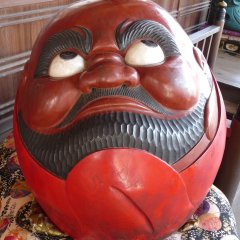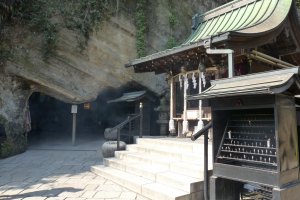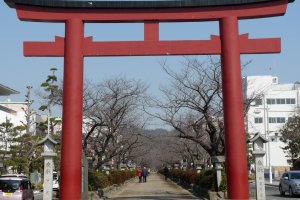My plan is to head out to Kamakura, which was once the seat of the first feudal government in Japan. It’s now better known for its temples and the site of the Great Buddha. Kamakura is a one hour journey from Tokyo but, of course, this means I have to get out of Tokyo first.
It’s a bad journey from the beginning. At Shinjuku station, I’m told to go to platform one. There’s a train in platform one and I try to get in. However, I’m pushed out by a woman who points to a sign that says the carriage is a women-only carriage. I race to the third carriage, which is the first one that is not women-only, but which is full of women too. I get shoved and pushed, as men and women get in and out at the next few stops. I’m not even sure if I’m on the right train. The sign gives no information in English. The only sign in English is the one telling me to turn my phone to silent. The train is full of miserable people. I’m glad I don’t live in the world of commuter trains. Although it’s a Tuesday, it reminds me of the saying: ‘It’s not Mondays that you don’t like, it’s your job that you don’t like.’ Just a smile from one person would help. Looking around, I guess it will have to be me that makes the first move. I tell myself to smile at someone or be extra nice when someone shoves into me. The journey becomes more bearable the further out of Tokyo we get and the passengers reduce in number. It is bright sunshine outside now too, which helps.
At Kamakura, I change trains for the Endoshin Electric Railway, which is a local train that runs along the beautiful Sagami Bay. From Hase station, I follow the signs to the Diabutsu, the Great Buddha. The Daibutsu is a bronze statue depicting Buddha in a seated meditative pose. It’s over eleven metres in height and was built in 1252. It’s part of the Kotokuin Temple. The temple was originally situated indoors. Repeated disasters, such as storms and typhoons, destroyed all the buildings, but each time the statue remained unharmed and it has now become the symbol of Kamakura. The bronze of the statue shines brightly in the sun. There are very few tourists, so I sit awhile admiring the statue in the early morning warmth.
I get the train back to Kamakura station and walk along the beautiful Dankazura, the central reservation of Wakamiya-oji. It runs from the red entrance gate of Nino-tori to the Hachimangu Shrine. The path becomes narrower towards the shrine, giving the impression that the pathway is longer than it really is. In springtime, the cherry trees that line the path blossom, but I have to make do with bare trees, as I walk toward the shrine. It’s a beautiful walk and, again, empty of people. The shrine ahead is framed by trees, above a small stone bridge. The approach beyond the bridge to the steps of the red shrine is busier with more tourists here. This shrine was founded by Minamoto Yoriyoshi in 1063 and was moved to this location from the Yuigahama Coast in 1180. At the entrance, there’s a small Shinto shrine. From here, I can view the shrine and the booths selling fortunes and lucky charms. I watch three geishas purchase their fortunes and then laugh together as they tie them to the fence.
I wander back to the centre of town. It’s much busier now. Somehow, I end up in an awful shopping street. I do not understand how the Dankazura could be empty and this street can be busy. I’m stopped by an American, who’s the only other Westerner I’ve seen today. He asks me directions to the Hachimangu Shrine and is glad when I send him away from the shops. In stereotypical language, he says to me, “You look kinda templed out, man, so, like, maybe get a taxi to Zeniarai Temple. Like five bucks, man. It’s pretty awesome.”
For the equivalent of £3 each way, it is money well spent. The small Zenairai Benzaiten Shrine sits on the hillside, three kilometres or so above the town of Kamakura. The shrine itself is inside the rock face and there are beautifully built wooden gateways and temples all around it. There’s a Japanese rock garden with waterfalls and sculptured trees, incense is burning and smoke wafts throughout the complex and, best of all, the place is quite empty. Legend has it that the shrine was constructed by Minamoto Yoritomo, the first Shogun of Kamakura, after he received a divine message in his dreams to use the waters to offer prayers for peace in the world. Also, Hojo Tokiyori washed his money in the waters of the temple, praying for prosperity, and the waters are called zeniarai-mizu (money washing waters) because of this. It’s definitely my favourite place in Kamakura.





























